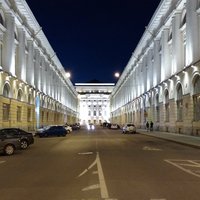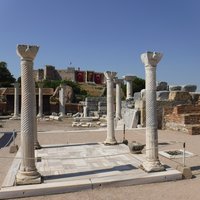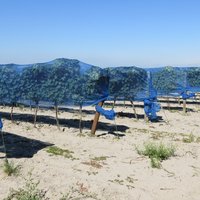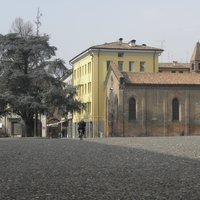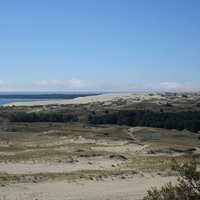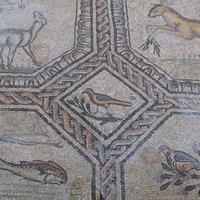Connected Sites
-
The "Amber room" at Tsarskoye Selo. A replica since the original disappeared during WWII after being looted by the Nazis
-
The Island of Neuwerk has an amber museum and a visitors' activity is searching for Amber torn up from the sea bed by storm surges.
-
Many amber 'totems' found at Artemis Temple, "possibly traded by Phoenicians from Lebanon, .., or from Sicily" (Hughes, The Seven Wonders of the Ancient World, p. 116)
-
The Romans describe it as a part of the Amber Route
-
Spina: "The city was at the southern end of the ancient Amber road from the Baltic sea. This trade was done through the Veneti, whose cities were to the north." (wiki)
See en.wikipedia.org
-
Carnuntum (ID No 31) - The "area around Carnuntum became a hub for the connection between Northern and Southern Europe. This was due to the situation on the northern border of the Roman Empire and at the crossroad of the Limes road with an inner European long‐distance trade route, the so‐called Amber Road, which was at the same time the most important military‐strategic point for the Roman military to enter Germania magna. (Nomination file, p. 159) "In Roman times, Carnuntum had a history as a major trading centre for amber, brought from the north to traders who sold it in Italy; the main arm of the Amber Road crossed the Danube at Carnuntum."
See en.wikipedia.org
-
The village of Juodkrante (within the inscribed area) was a major source of amber on an industrial scale. Wiki : - "In 1860 Stantien & Becker company was founded to dig amber just north of the village. During 30 years of operations, it dug out about 2,250,000 kg of amber. During its peak the company employed about 1,000 workers." A significant collection of Amber items from the Neolithic and Bronze ages was put together by a R klebs but in the WWII period much got lost and dispersed. There is an Amber museum at Nida (marked on nomination file map) which contains copies of many of the itmes from the collection.
-
AB review - "It was also the southern terminus of the amber route, dating from prehistory, and this prized product from the Baltic was worked by Aquileian craftsmen for sale throughout the Empire"

